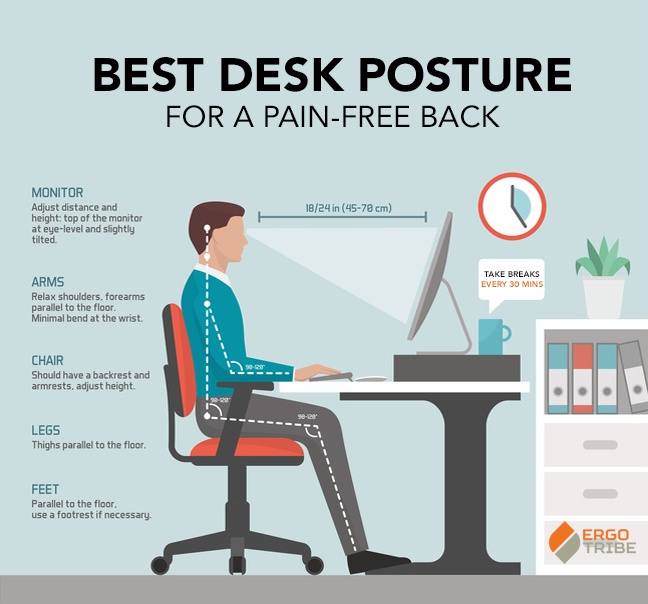Do you suffer from chronic lower back pain? Have you been recently diagnosed with sciatica? If so, you may find it extremely challenging to sit within an office environment for extended periods of time. Let’s quickly examine sciatica before discussing what to look for in the best computer chair for lower back and hip pain.
What is Sciatica?
The spinal column gives rise to many nerves and one of the largest is known as the sciatic nerve. If impinged, numerous symptoms can occur. These include:
- Pain in the lower back and buttocks that may radiate down one or both legs.
- Feelings of numbness, weakness and/or tingling.
Sitting stretches the sciatic nerve. This is why choosing the best office chair for lower back pain and sciatica is extremely important.
Characteristics of the Best Office Chair for Lower Back Pain and Sciatica
Any office chair should be able to address your unique ergonomics (the natural characteristics of your skeletal body). In other words, it needs to conform to the dimensions of your body. This is why posture plays a critical role. Perhaps the most important takeaway point is that the chair in question should be adjustable as opposed to remaining in a fixed position. Here are five elements to consider:
- The height of a desktop device (such as a computer monitor).
- The position of the arms.
- The types of support that the chair offers.
- The angle of your legs.
- Where your feet are placed.
- Let us now examine each in a bit more detail.
Ideally, you should be able to adjust the height of the chair so that it accommodates the location of the desktop monitor. Experts agree that the screen must be placed at eye level and no further than 70 centimetres away.
Quality chairs allow your arms to be relaxed and your forearms to remain parallel to the floor. This helps to relax the shoulder girdle while working.

All ergonomic chairs need to offer ample lower lumbar support, comfortable cushions and backrests that are shaped to the natural contours of your spine. As each individual is naturally different, it could be wise to select a model which is available in numerous sizes.
The height of the chair should be adjustable. Professionals state that your thighs must remain parallel with the floor or angle slightly down at the knee. This will help to prevent additional stress that could be placed upon your spinal erectors (the supporting muscles surrounding your lower spine and the very same area that is often associated with sciatic pain).
Finally, your feet should be planted firmly upon the floor. If this is not possible, a footrest can be employed. Dangling feet will inevitably cause pain and discomfort in the lower back.
Office chairs come in a wide array of sizes, styles and designs. The main point is that any model must be able to adapt to the unique ergonomics of your body. If you need help choosing the best chair for you, give us a call on 03 9034 7735 or click to book an appointment online.
